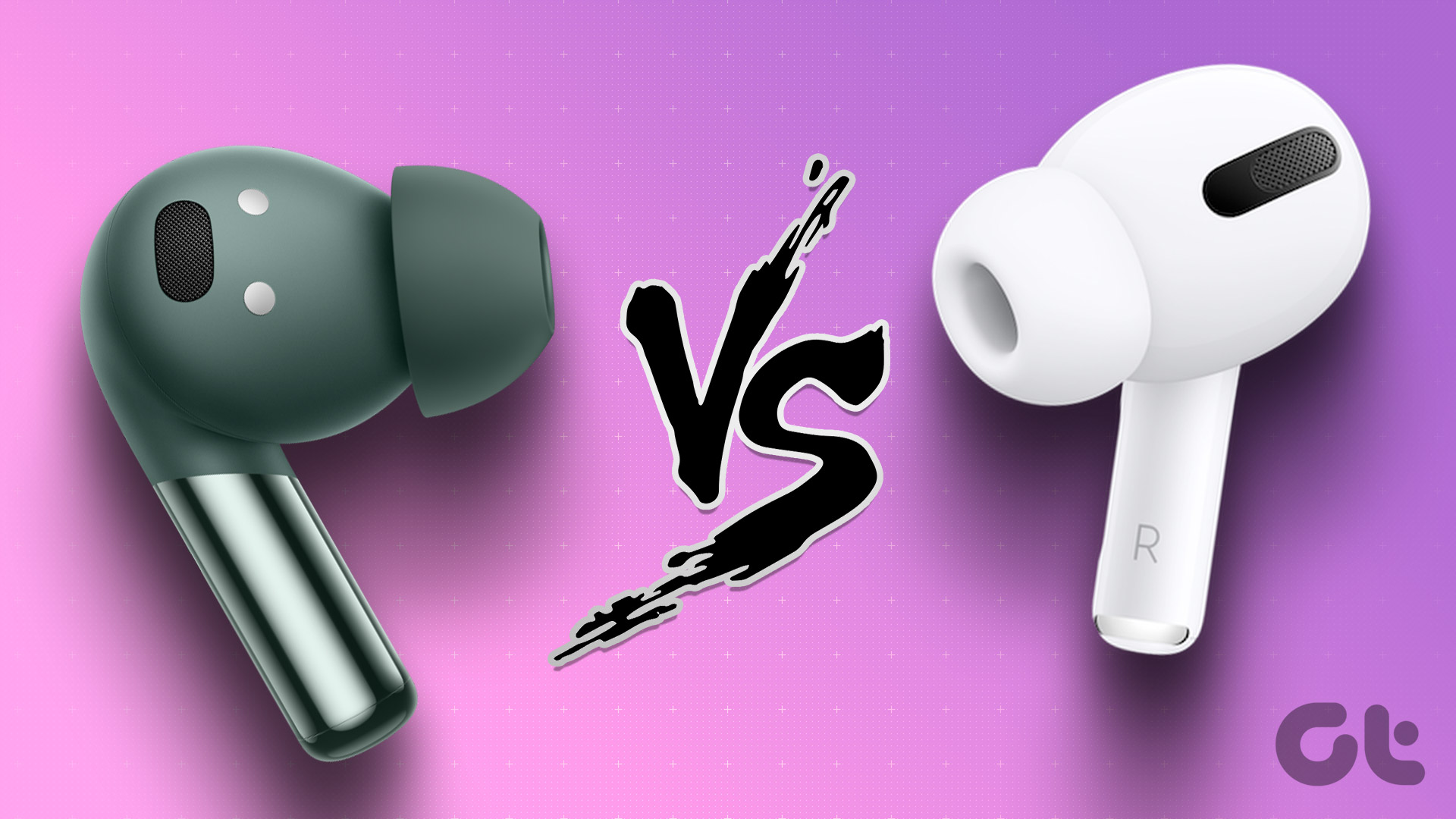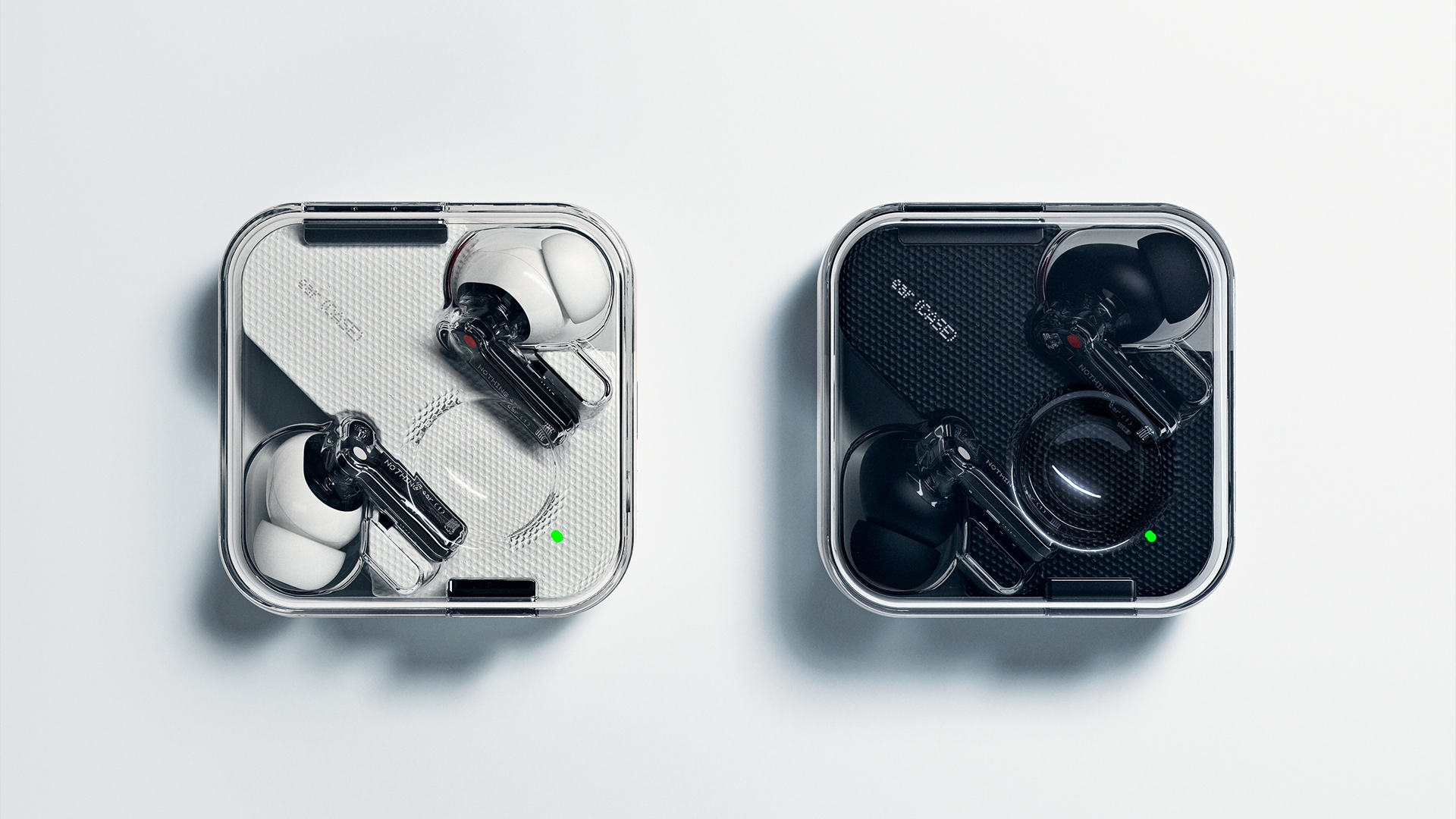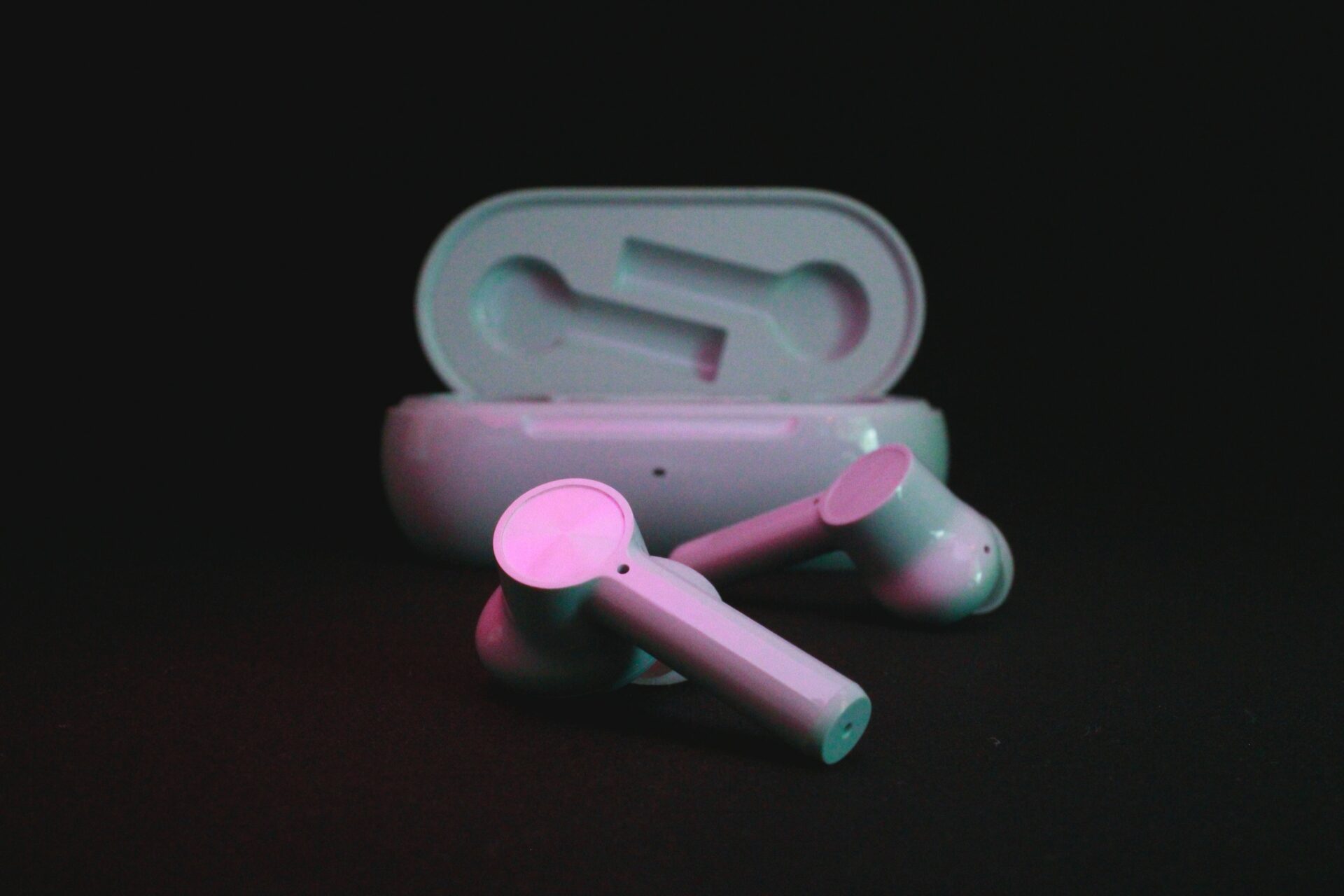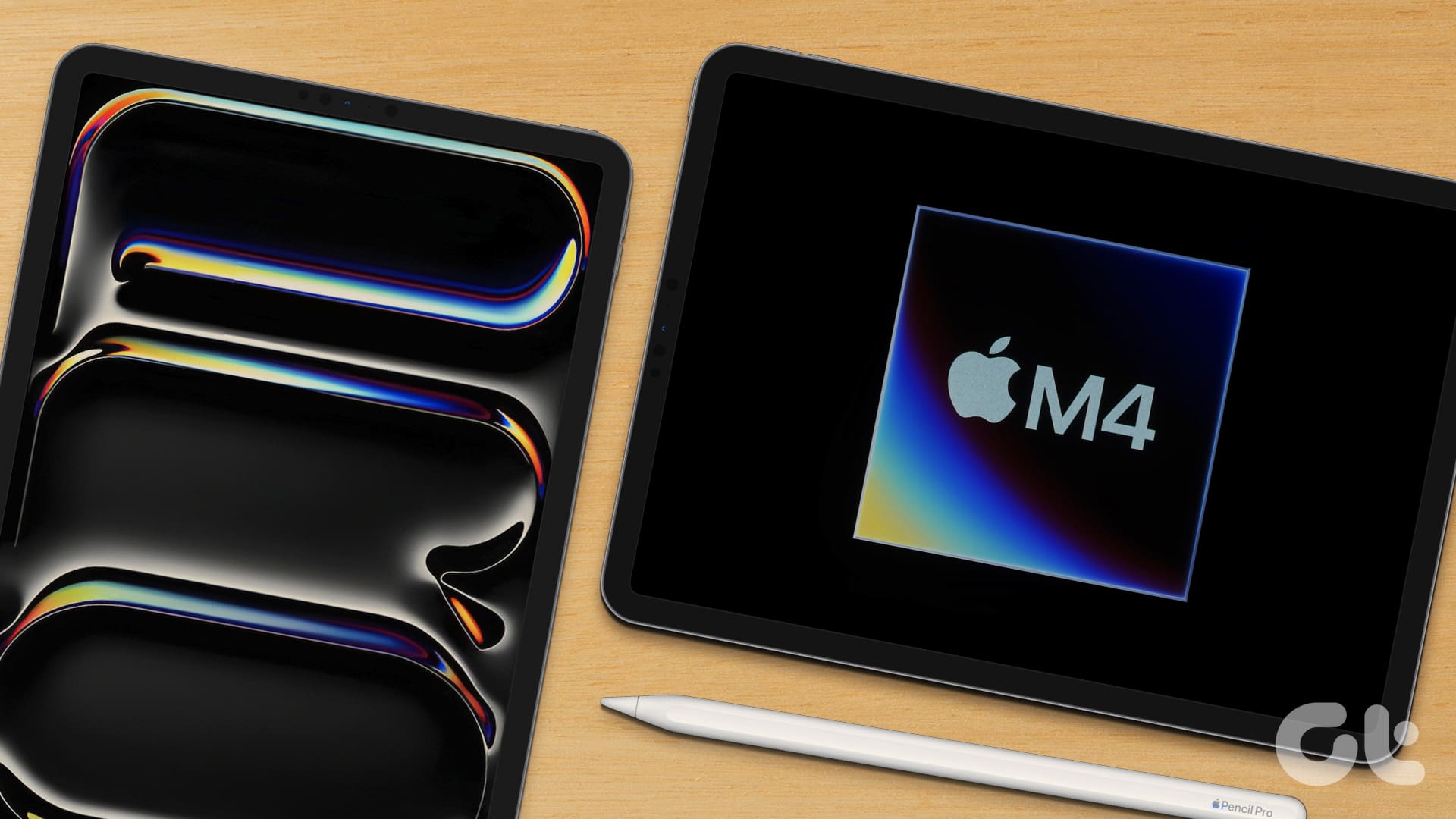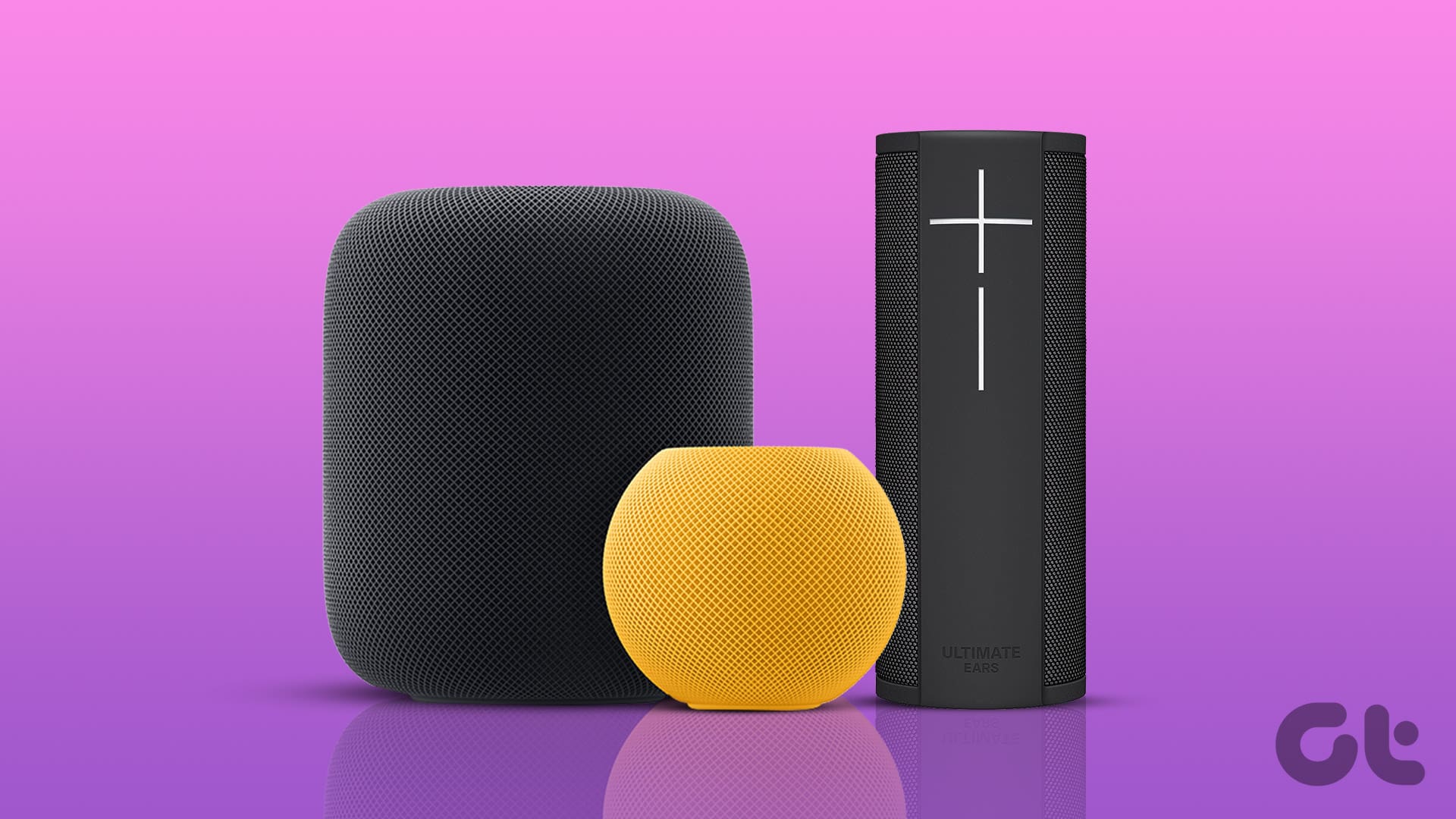It’s not often that a new company gives established veterans a run for their money. But, Carl Pei’s latest tech venture Nothing has done just that. Backed by a ton of hype, unique designs, and – I can’t believe I am writing this either – memes, Nothing’s products have been received surprisingly well. In fact, the brand managed to sell over 400,000 units of the Ear (1) TWS headset.
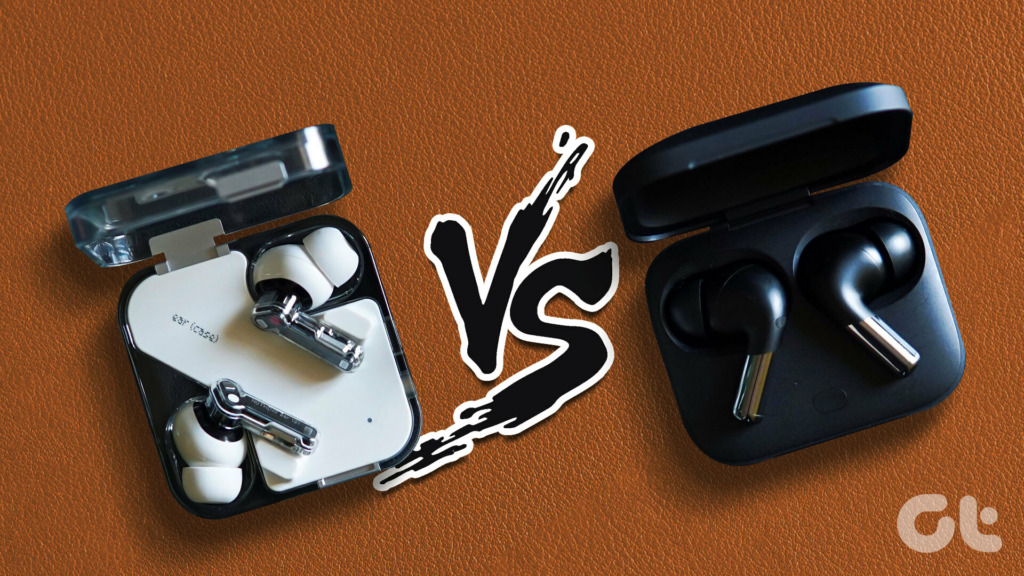
With the wind at Nothing’s back, the company recently announced the successor to the Ear (1) headset, aptly dubbed the Ear (2). I’ve been using the same for a hot minute and the newer buds offer significantly better sound output compared to the Ear (1) headset.
But, can they hold a candle to other similarly specced models? Case in point, the OnePlus Buds Pro 2, which cost the same albeit offers slightly different acoustics and features.
Well, that’s what I’m here to find out. So, if you’ve been eyeing the headsets, read on, as I will try and help you choose between one or the other.
Nothing Ear (2) vs OnePlus Buds Pro 2: Specs At a Glance
| Nothing Ear (2) | OnePlus Buds Pro 2 | |
| Weight | Earbuds – 4.5 grams each Case – 51.9 grams | Earbuds – 4.9 grams each Case – 47.3 grams |
| Bluetooth version | Bluetooth v5.3 | Bluetooth v5.3 |
| Codecs supported | SBC, AAC, and LHDC | SBC, AAC, LC3, and LHDC |
| ANC | Yes | Yes |
| Wireless charging | Yes | Yes |
| Battery life | Up to 26.5 hours (with the case) and ANC | Up to 25 hours (with the case) and ANC |
| IP rating | Earbuds – IP54 Case – IP55 | Earbuds – IP55 Case – IPX4 |
Design and Comfort
No surprises here, the Ear (2) takes a vehement lead in the design department. Now, there are arguments to be made against Ear (2)’s transparent design. For one, the device’s case gets scuffed easily and despite babying the headset, my review unit has a few dings already. Further, the case’s boxy form factor makes it a tad uncomfortable to stow inside the pockets of your jeans.

Be that as it may, the unit looks bewitching, to say the least. To give you some context, I’ve spent a lot of time with the Ear (1) and the Ear Stick. Even then, the Ear (2)’s transparent design comes across as a breath of fresh air. So much so, I am constantly finding new details on the buds, or the case itself. Be it the red and white dots to signify the left and right earpieces, the etching on the case, and the skeletonized stems, that showcase the microphone and the pinch sensors, the Ear (2) is oozing with character.
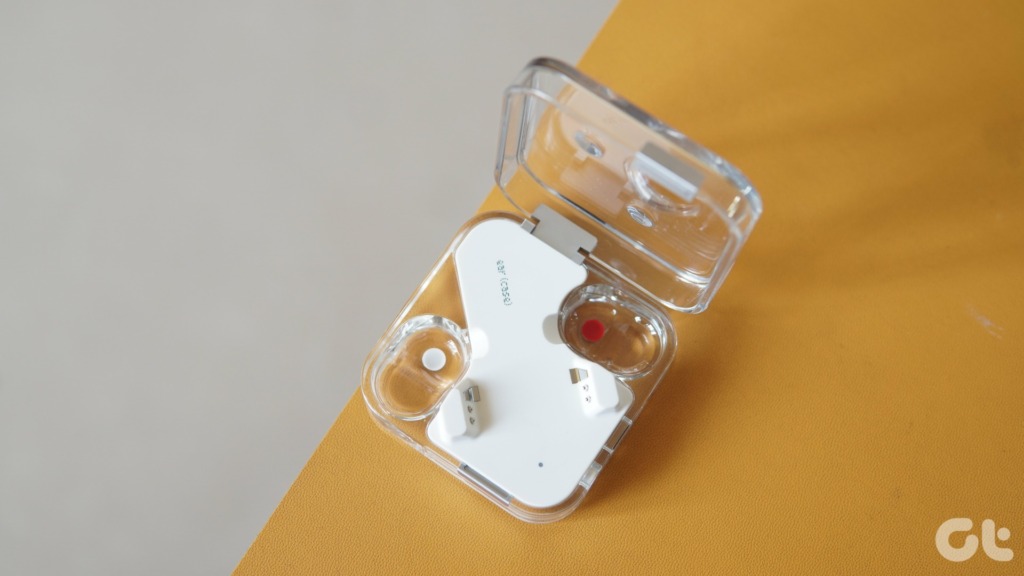
The OnePlus Buds Pro 2, on the other hand, looks like a generic TWS headset. Don’t get me wrong, the case looks stylish and comes wrapped in a matte black hue. Further, the earbuds’ two-toned finish adds a bit of pizazz to the unit’s otherwise monochromatic color tone as well. Regardless, the Ear (2) will attract more eyeballs every time you take it out of your pockets.
Coming to the design of the earbuds, both, the OnePlus Buds Pro 2 and the Ear (2) feature an earpiece with a protruding stem. Ear (2)’s stem is a smidge shorter and I noticed that the earpieces didn’t bite my ear when my head was pressing against a pillow. As such, you can wear the earphone to bed, if need be. The Buds Pro 2, on the other hand, had me tossing and turning at night.

That’s not all, as the Ear (2) stayed anchored to my ears when I was working out too. To wit, I had to reposition the Buds Pro 2 time and again, especially for strenuous HIIT circuits that involved a lot of running and jumping. Do note that no earbud is a ‘one size fits all’ and your mileage could vary. But, from where I stand, the Ear (2) stays lodged to the ear better.
Since we’re on the subject, you should note that Ear (2) touts an IP54 rating for the buds and an IP55 rating for the case. The OnePlus Buds Pro 2, on the other hand, features an IP55 rating for the buds and an IPX4 rating for the case. Consequently, you can sweat it out in the gym with both earphones.
Other than that, the cases for both earphones can be charged wirelessly. Further, you will get a USB Type-C port with both devices, along with an LED light and a quick-pair button positioned on each case as well.
App and Features
The Nothing Ear (2) and the OnePlus Buds Pro 2 come with a treasure trove of features. To that end, both, the Ear (2) as well as the Buds Pro 2 feature pinch controls that work extremely well. But, before I dissect the control layout further, it’s important to note that by their very nature, pinch controls tend to dislodge the headset from your ears. In fact, the stiffer the ‘pinch’, the greater likelihood of knocking the buds out of position.

So, if you’re like me and change songs willy-nilly, then you might find the Ear (2) more to your liking. I say this, as the earbuds actuate the pinch commands with a gentler squeeze. That’s not all, as unlike the Buds Pro 2, you can variate the volume levels with the Ear (2)’s pinch controls as well. On the upside, both earbuds come with bountiful features, including a low-latency mode for gaming and multi-point connectivity.
That said, the Buds Pro 2 gets a Zen Mode Air feature which plays calming nature sounds. You can choose from five different white noise presets, the likes of which include sounds of nighttime camping and a summery seashore.

Do note that both earphones come with a companion app as well. In the case of Nothing Ear (2), buyers will be greeted by the Nothing X app, which sports a minimalistic UI. What’s more, the utility allows you to choose from four different EQ presets or customize one from the ground up. As for the Buds Pro 2, the headset works in tandem with the HeyMelody app.
The app comes with a few more EQ presets and you can even program the Buds Pro 2 to dynamically boost the bass output via the utility. Other than that, though, the companion apps are neck and neck.
ANC and Battery Life
The Nothing Ear (2) and the OnePlus Buds Pro 2 are flagship TWS headsets from their respective brands. As you might’ve guessed by now, both earbuds benefit from ANC technology too. Now, for the most part, the earbuds canceled ambient sound equally well. If anything, the Buds Pro 2 was marginally better at keeping the sound from my ceiling fan and mechanical keyboard in check.
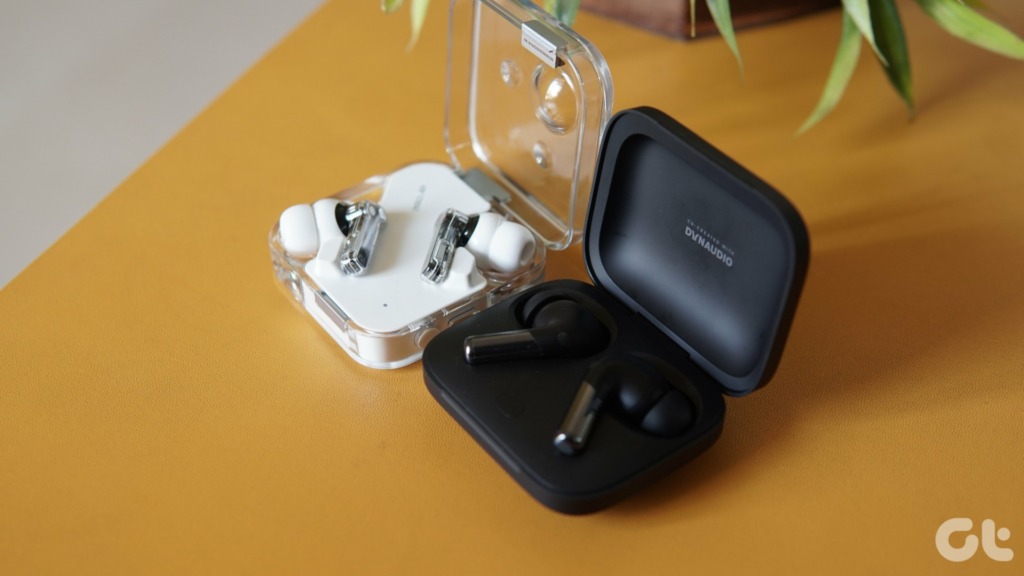
With that said, I noticed that the Ear (2)’s ANC tech created a vacuum of sorts in my ear. As such, I didn’t use the earphone’s ANC feature for hours at stretch. On the upside, both, the Ear (2) as well as the Buds Pro 2 ship with a Transparency mode that lets some outside noise seep in. So, you can take the earphones to a gym or for a run and still be in tune with your surroundings.
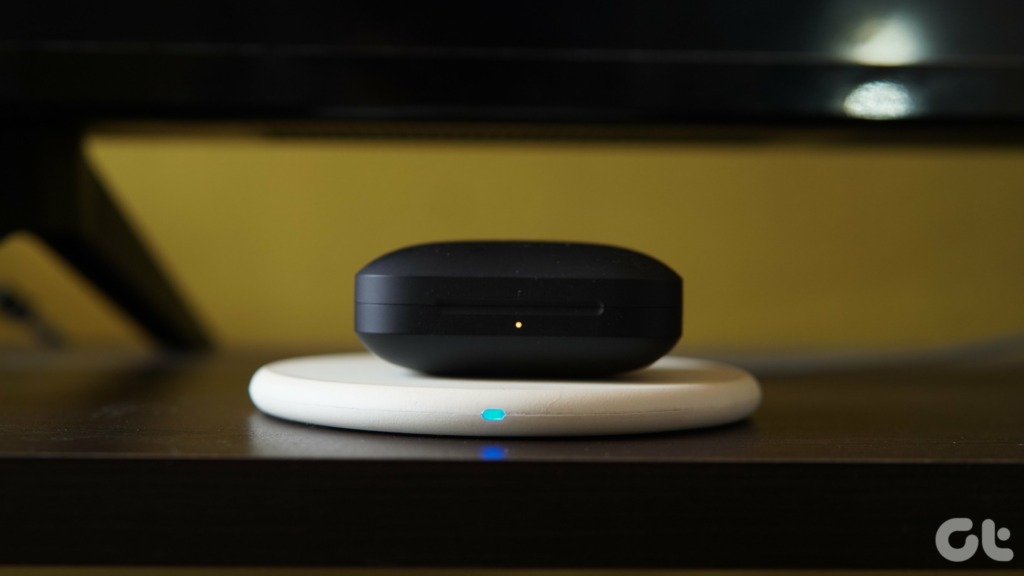
As for the battery backup, the Buds Pro 2 will last you a tad longer. With the ANC enabled, I was netting close to 4.5 hours of music playback with the Ear (2) and a bit over five hours with OnePlus Buds Pro 2.
Additionally, OnePlus Buds Pro 2’s case offers an additional 25 hours of juice, whereas the Ear (2) tops out at 22.5 hours. While I would’ve liked to see slightly better battery life with the Ear (2), the buds should last you a full day off a single charge.
Sound Quality
An earphone’s sound output can make or break its sale. So, how does the Ear (2) sound? And, can it hold its own against the OnePlus Buds Pro 2? Well, before I talk about that, allow me to run some numbers by you. The Nothing Ear (2) is backed by an 11.6mm dynamic driver that is positioned inside each earpiece. The unit has been tuned by the brand and can relay audio over AAC, SBC, and LHDC codecs.

The Buds Pro 2, on the other hand, ships with a dual-driver array comprising a 6mm planar magnetic driver and an 11mm dynamic driver. As for codecs, the device supports SBC, AAC, LC3, and LHDC Bluetooth codecs. For the purpose of this article, I paired the earphones with the OPPO Find N2 Flip and Xiaomi 12 Pro. Both smartphones support music playback over the high-fidelity LHDC codec.
Do note that I was using LHDC V3/V4 for my streaming sessions. Further, I selected the ‘optimized for audio quality’ preset from within the developer options as well, thereby ensuring the devices were streaming at 900kbps. For music, I used lossless media from Apple Music during my stint with the earphones.
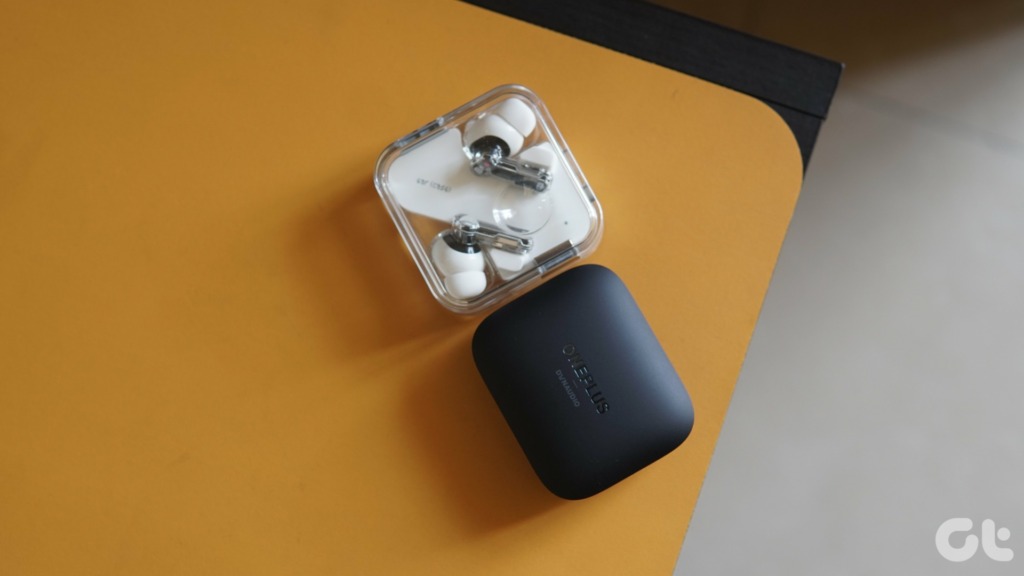
Coming to the meat of the matter, both earphones bring out bountiful details in a soundtrack. That said, the Ear (2) sounds a tad more energetic. In fact, the earbuds have been tuned to overturn brighter, more sparkly highs.
The OnePlus Buds Pro 2, on the other hand, favors the low-end and outputs meatier beats. That’s not all, as I also noticed that the Buds Pro 2 offered slightly better imaging, thereby ensuring chaotic ballads don’t sound packed and congested. It also overturned a wider soundstage.
As an example, Arctic Monkey’s Do I Wanna Know kicked off with a resoundingly powerful slam when I was listening to the track on the OnePlus Buds Pro 2. So much so, the bass line rattled my ears ever so slightly. The Ear (2), on the other hand, overturned an equally tight thump albeit with lesser texture and gravitas.
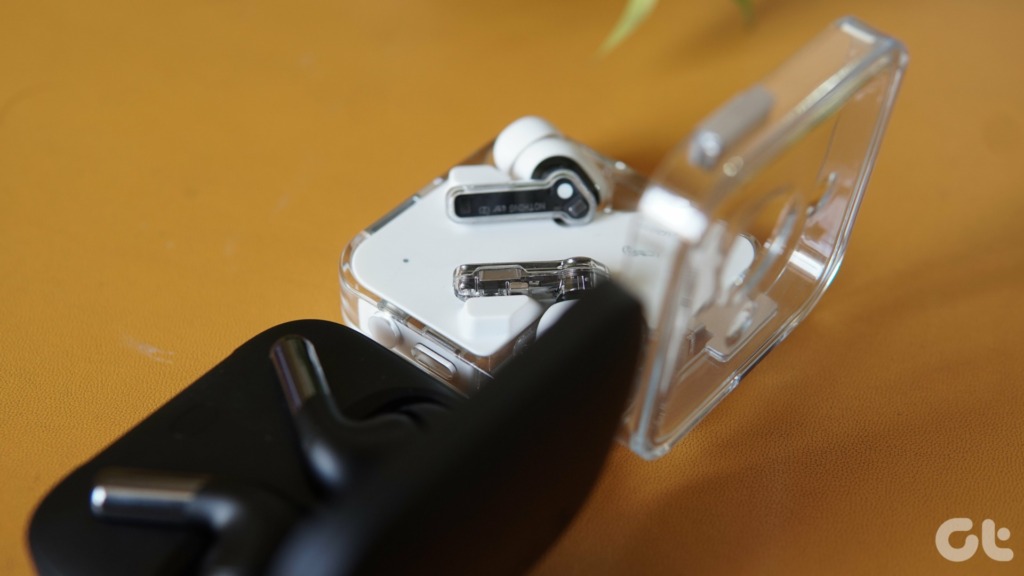
As you might know, the song’s chorus is chockablock with instruments. Here, the Buds Pro 2 cast a shadow on the Ear (2)’s sound output. To wit, the Buds Pro 2 sounded slightly clearer and airier. As such, I was able to single out the different instruments playing in the background easily. The Ear (2)’s output – while not muddy – was not as legible either. Don’t get me wrong, the difference isn’t night and day and you’ll have to keep an ear out to understand the nuances between the two earbuds.
Be that as it may, the Buds Pro 2 has decidedly better imaging and a more enjoyable low-end. On the upside, the Ear (2) offers better tonality and I noticed that it reciprocated the sound of different instruments to a tee. The same is evident in Sutej Singh’s The Comeback Trail wherein, the riffs from the electric guitar sounded much livelier through the Ear (2).
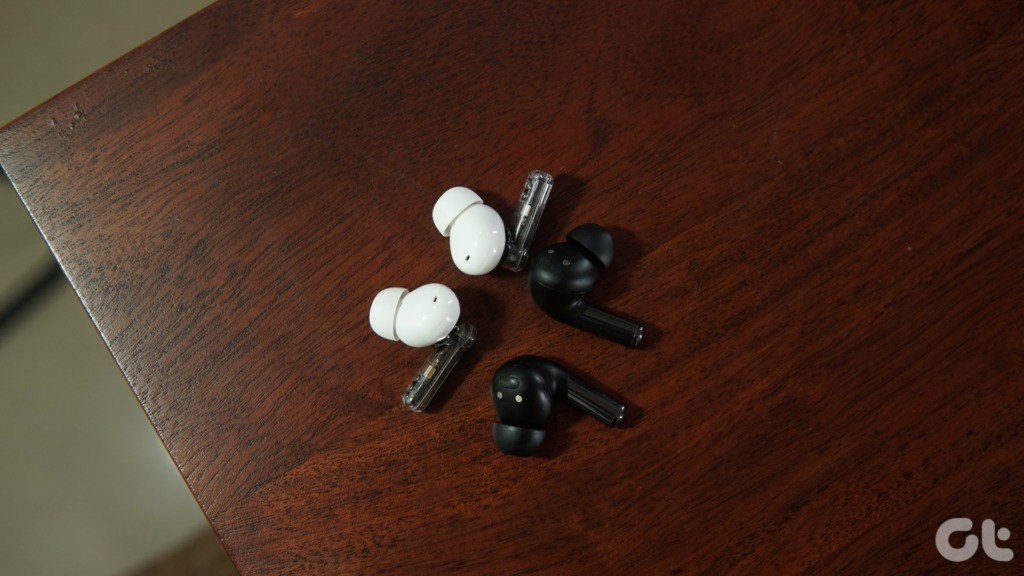
In particular, the hammer-ons and pull-offs sounded spectacular, and I couldn’t help but get lost in the soundtrack. On the other hand, the riffs felt more relaxed and lethargic when relayed via the Buds Pro 2. Thankfully, both earphones offer a smooth midrange with little to no erratic spikes.
To that end, I thoroughly enjoyed listening to vocal-heavy soundtracks like Aerosmith’s Dream On and James Arthur’s Impossible on the earphones. What’s more, neither of the two sounded sibilant or shrill during my testing either, which is great.
Nothing Ear (2) vs OnePlus Buds Pro 2: Verdict
So, where does that leave us? Well, the OnePlus Buds Pro 2 costs $179, and for the price, the earbud brings a beefier battery backup and stronger ANC to the mix. I also preferred the Buds Pro 2’s low-end output to that of the Ear (2). Moreover, the Buds Pro 2 boasts superior imaging, which lets you – the listener – appreciate the cacophony of instruments in a cluttered soundtrack.
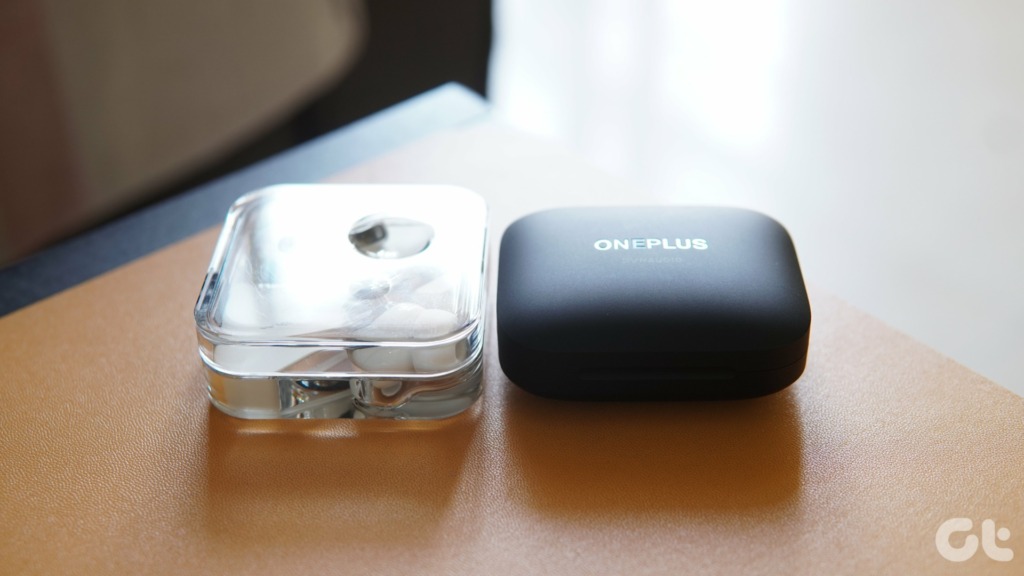
With that said, Ear (2) has a lot going for it as well. For one, the unit costs just $150 and despite that, offers a unique design that will definitely turn heads. More notably, the pair is more comfortable to wear and overturns shimmery, energetic highs. As such, you will revel in listening to say, The Killers or other Rock bands on the headset. I was also in awe of the Ear (2)’s tonality and the cans relayed the sound from different instruments authentically.
Choosing between the two is no mean feat, but rest assured, you will not be disappointed with the Ear (2) or the Buds Pro 2. Do let us know which TWS you opted for in the comments below and as always, stay tuned to our blog for more comparisons.
Was this helpful?
Last updated on 06 April, 2023
The article above may contain affiliate links which help support Guiding Tech. The content remains unbiased and authentic and will never affect our editorial integrity.

